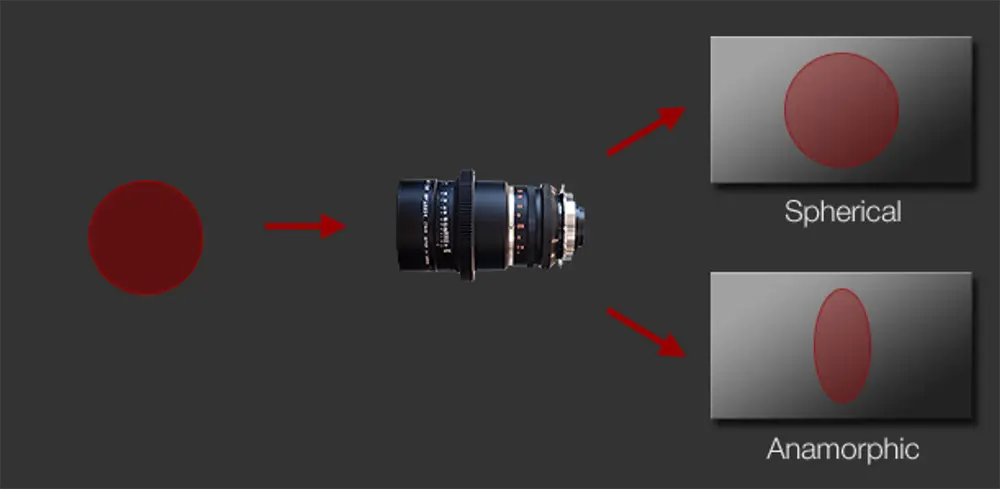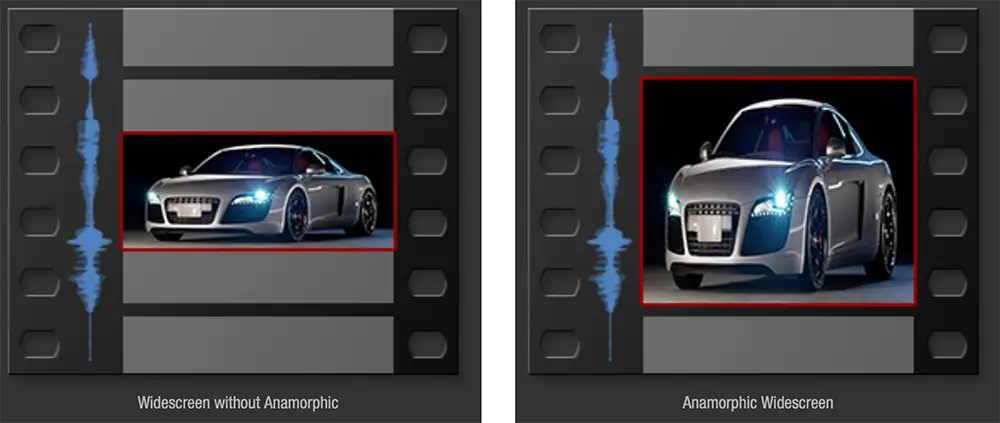
In the world of film and photography, two types of lenses are commonly used – spherical and anamorphic. Spherical lenses are the most widely used and are the default option unless otherwise stated.
These lenses capture images as they are, without altering their shape or proportions. On the contrary, anamorphic lenses capture a compressed version of the image, usually stretching it along the longer axis by a factor of two.
To get the intended result, the image captured by anamorphic lenses must be stretched back to its original proportions, either during post-production or while projecting.
more articles: how to get verified on instagram
Anamorphic format
If you’re aiming to achieve that classic Hollywood vibe in your photos, you might want to reconsider relying solely on editing tools like Photoshop or Lightroom. Instead, take a closer look at your lens. more articles: Squarespace Store
An anamorphic lens can give you the cinematic style you’re after with its unique characteristics such as a shallow depth of field, horizontal lens distortion, oval-shaped bokeh, and those signature flares that add to that movie-like effect.
An anamorphic lens is used by cinematographers to record widescreen shots on 4:3 sensors without cropping the image. It creates a distorted, squeezed image that can be adjusted to its proper aspect ratio in post-production. more articles: DSLR Microphones

Let me explain why you might want to consider using an anamorphic lens in your photography. Firstly, it’s all about that classic Hollywood look. A lot of movies today have a super wide aspect ratio, usually 2.39:1, and anamorphic lenses can help you achieve that.
With an anamorphic lens, you can capture wide-angle shots with an incredibly shallow depth of field, giving you that cinematic feel we all love. This unique style can definitely make your photos stand out from the crowd. more articles: external camera screen
Another advantage of an anamorphic lens is its signature horizontal lens flare. This can add a mysterious, otherworldly atmosphere to your shots, just like in any JJ Abrams movie. So, if you’re looking to up your photography game and capture those epic, movie-like shots, give an anamorphic lens a try!
Finally, let’s talk about the horizontally stretched bokeh balls, another standout feature of anamorphic lenses that make them so popular.
Shooting with an Anamorphic Lens You don’t have to be a seasoned cinematographer to use an anamorphic lenses. Give it a try with your DSLR or still camera, it’s a fun experiment and a must-try if you’re looking to achieve that Hollywood look. more articles: How to open a shop on Etsy
To mount an anamorphic lens onto a prime lens, you’ll need an anamorphic clamp and screws. First, focus the prime lens, then adjust the focus on the anamorphic lens. It may take some practice, especially when focusing on objects that aren’t in the center of the frame, but it’s easier to start with landscapes before moving on to portraits.
In conclusion
It’s all the rage these days to create a cinematic look, and while some photographers turn to Lightroom presets, the real key to achieving this style is by using anamorphic lenses. Your photos will have a unique touch that will have everyone asking, “How did you do that?” more articles: how to get verified on instagram
FAQs
When shooting anamorphic, filmmakers use lenses that produce oval lens flares and bokeh, and a shallower depth of field, resulting in a more cinematic look.
An anamorphic lens projector stretches the image to a 2.40:1 aspect ratio, preserving both the full resolution and image quality of a movie.
An anamorphic lens is mounted onto a prime lens using an anamorphic clamp with screws.
if you’re looking to increase your online conversion but still feel you are not sure where to start – check out these resources below:









1 thought on “Anamorphic Lenses explained”
The ‘Anamorphic Lenses Explained’ article on Pro Photo Studio was a revelation. It perfectly captures the essence of why anamorphic lenses are a game-changer in film. The section on lens flares and aspect ratios was particularly enlightening